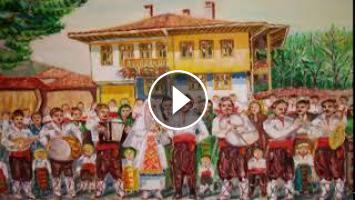Bulgarian music uses a wide range of instruments. Some folk instruments are variants of traditional Asian instruments such as the "Saz" (Bulgarian tambura), or the kemençe (Bulgarian gъdulka). Bulgarian folk bands, called bitovi, use instruments that commonly include: The gaida, a traditional goat-skin bagpipe. The kaval, an end-blown flute is very close to the Turkish kaval, as well as the Arabic Ney. The gadulka, a bowed stringed instrument perhaps descended from the rebec, held vertically, with melody and sympathetic strings. The tǔpan, a large drum worn over the shoulder by the player and hit with a beater ("kiyak") on one side and a thin stick ("osier") on the other. The tambura, a long-necked, metal-strung, fretted lute used for rhythmic accompaniment as well as melodic solos. The tarabuka or dumbek, an hourglass-shaped finger-drum. Other instruments arrived in Bulgaria in the 19th century, including the accordion and the clarinet. Regional styles abound in Bulgaria. Dobrudzha, Sofia, the region surrounding Sofia (Shope style), Rhodopes, Macedonia (Pirin), Thrace, Strandzha and the Danube shore all have distinctive sounds. Some folk music revolves around holidays like Christmas, New Year's Day, midsummer, and the Feast of St. Lazarus, as well as the Strandzha region's unusual Nestinarstvo rites. The distinctive sounds of women's choirs in Bulgarian folk music come from their unique rhythms, harmony and vocal production. The tradition of church singing in Bulgaria is more than a thousand years old, and can be traced back to the early Middle Ages.
Be the first to comment



